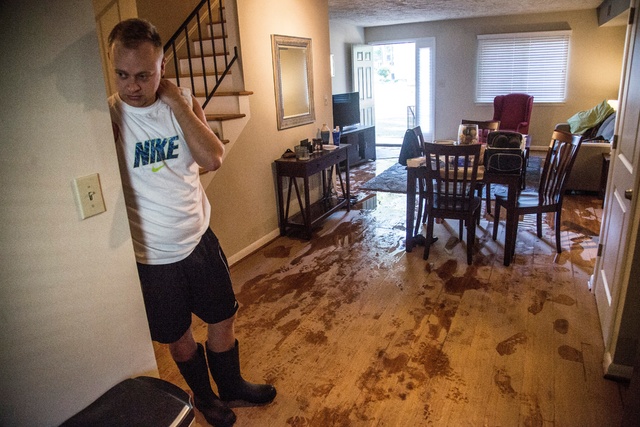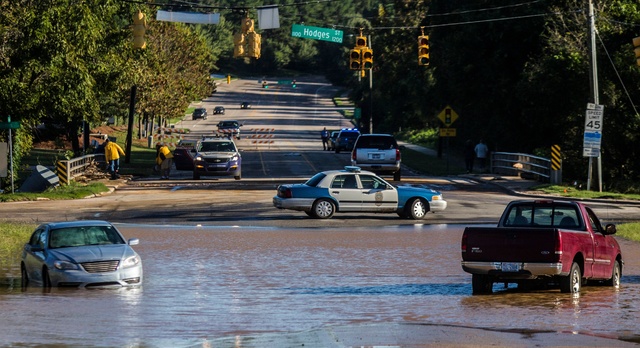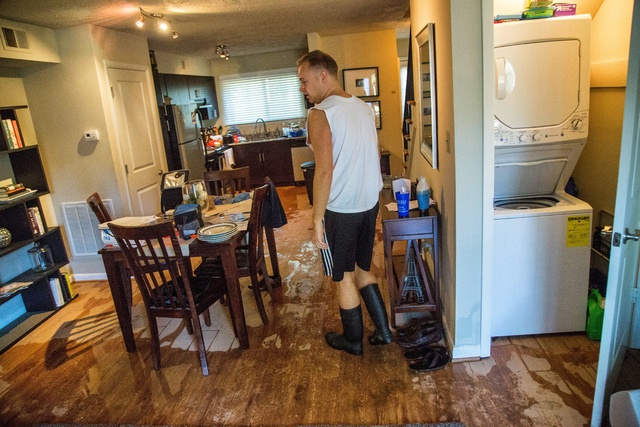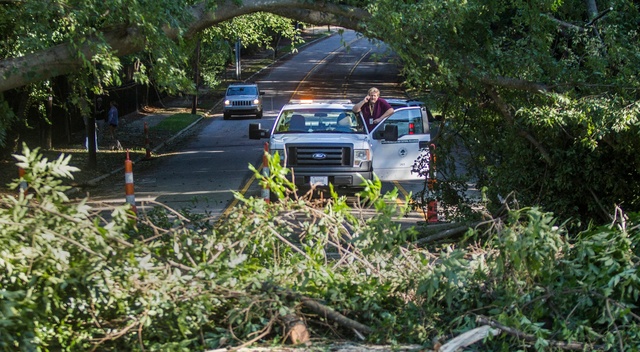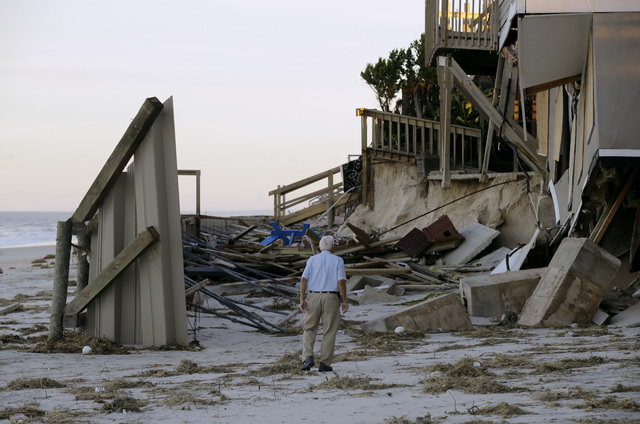Hurricane Matthew triggers severe flooding in NC as US death toll climbs
WILMINGTON, N.C. — Hurricane Matthew’s torrential rains triggered severe flooding in North Carolina on Sunday as the deteriorating storm made its exit to the sea, and thousands of people had to be rescued from their homes and cars. The death toll in the U.S. climbed to at least 16, nearly half of them in North Carolina.
The storm was stripped of hurricane status just before daybreak, but the crisis — set off by downpours of more than a foot — was far from over.
“As the sun rises in North Carolina and the blue sky returns, our state is facing major destruction and, sadly, loss of life,” Gov. Pat McCrory said as the effects of Saturday’s deluge became clearer at daylight.
Rivers and creeks overflowed, driving people from their homes and trapping others as much as 100 miles inland. The unofficial rainfall totals were staggering: 18 inches in Wilmington, 14 inches in Fayetteville and 8 inches in Raleigh.
McCrory said police and emergency crews had made more than 880 water rescues. In the Fayetteville area alone, rescue crews saved nearly 600 people from the rapidly rising floodwaters, officials said.
The governor said that four people were missing in the Fayetteville area and that the full scale of the disaster was not yet known because the flooding continued overnight and there were many places that search teams had not yet reached.
“There could be some backroads where we had people swept away. I’m praying that is not going to be,” McCrory said.
Most of the deaths happened when vehicles were swept away by floodwaters.
About 100 guests and workers had to be evacuated from a Comfort Inn motel in the North Carolina coastal town of Southport after the hurricane cracked a wall and left the roof in danger of collapse, authorities said. And dramatic video showed Fayetteville police rescuing a woman and her small child from their car as rising waters swallowed it.
Shortly before daybreak, the hurricane was downgraded to a post-tropical cyclone. As of 8 a.m. EDT, the storm was centered about 60 miles southeast of Cape Hatteras, North Carolina, moving out to sea. It still had hurricane-force winds of 75 mph.
Forecasters said North Carolina and Virginia could get even more rain and warned of the danger of life-threatening flooding through Monday night.
“Stay home. Most of your church services have been cancelled. There’s no reason to go out. Take the day off,” Fayetteville Mayor Nat Robertson said.
Matthew killed more than 500 people in Haiti last week, plowing into the desperately poor country at 145 mph. The fearsome storm then sideswiped hundreds of miles of the U.S. coastline from Florida through Georgia and the Carolinas, its eye staying far enough offshore that the damage in many places was relatively modest, consisting mostly of flooded streets, flattened trees and blown-down signs and awnings.
Up until Saturday night and Sunday morning, it appeared that the U.S. might pull through without the catastrophic damage that forecasters said was possible. Many people counted themselves lucky.
Along the main drag in Daytona Beach, Florida, the Silver Diner had all of its shiny metal siding ripped off the front and sides, leaving only a wood frame exposed. Next door, the window of a souvenir shop had been blown out and the roof and ceiling torn through, leaving pink insulation dangling.
David Beasley, president of Insurance Recovery Inc., surveyed the damage and said that although it looked bad, the main strip was hit harder by Hurricanes Charley and Frances in 2004.
“This is not much compared to those two,” he said.
An estimated 2 million people in the Southeast were ordered to evacuate their homes as Matthew closed in. By hugging the coast, the storm behaved pretty much as forecasters predicted. A shift of just 20 or 30 miles could have meant widespread devastation.
“People got incredibly lucky,” Colorado State University meteorology professor Phil Klotzbach. “It was a super close call.”
While Matthew’s wind speed had dropped considerably by the time it hit the Southeast coast, the storm will rank as one of the most powerful hurricanes on record, based on such factors as wind energy and longevity, and as one of the most long-lived major hurricanes, too.
It was a major hurricane — that is, with winds of at least 110 mph — for just over seven days.
Three-quarters of a million people lost power in North Carolina, according to the governor, along with a similar number in South Carolina, 250,000 in Georgia and about 1 million in Florida.
In addition to the seven deaths in North Carolina, there were four in Florida, three in Georgia and one in South Carolina. Some were killed by falling trees, others by carbon monoxide fumes from a generator.
Property data firm CoreLogic projected that insured losses on home and commercial properties would amount to $4 billion to $6 billion, well below Hurricane Katrina’s $40 billion and Superstorm Sandy’s $20 billion.
RELATED
Weakened Hurricane Matthew continues up East Coast; 10 dead
Florida escapes major hit as Hurricane Matthew heads north
Death toll in Haiti from Hurricane Matthew rises above 800



